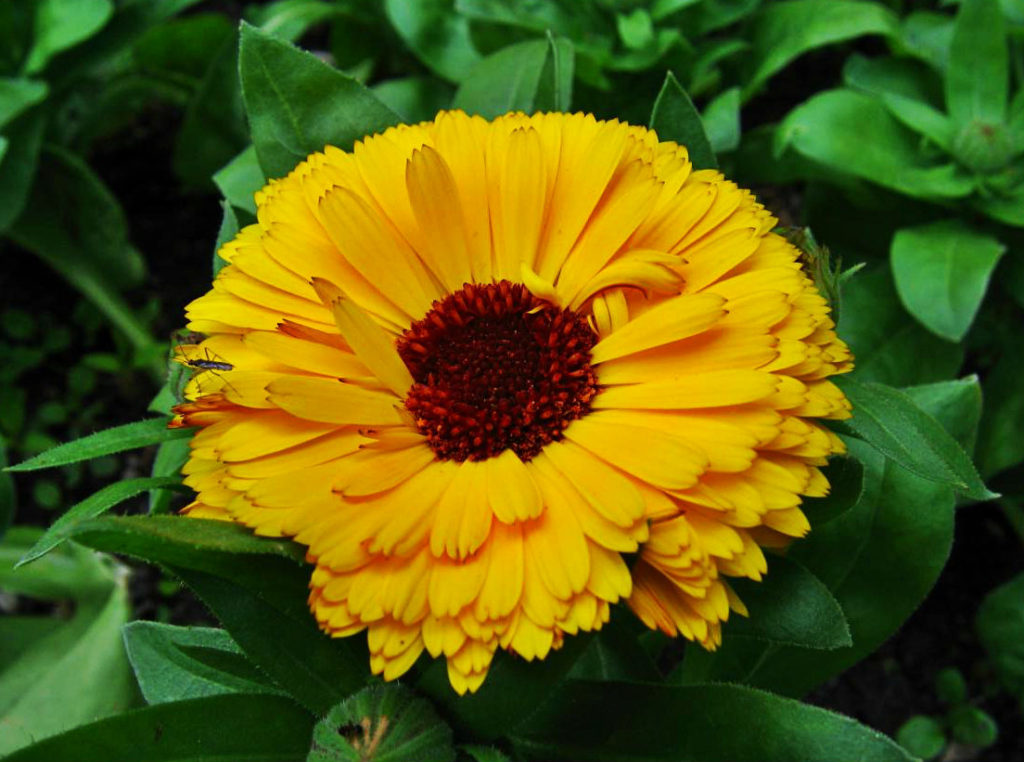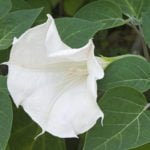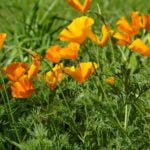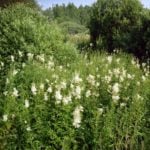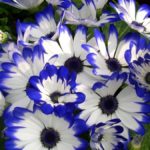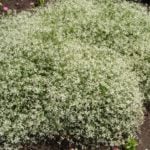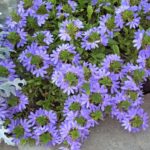The word “calendae” the Romans called the first and last day of the month. The name of the calendar comes from this word. The plant got its name because it blooms tirelessly from month to month. Since its curved seeds resemble clipped nails, hence the name marigold. Interestingly, marigold, as a spicy plant, was especially popular in the Middle Ages: it replaced the expensive saffron, not inferior to it in flavor.
Calendula officinalis is an annual herbaceous, hairy-pubescent plant with a strong specific smell. The stems are erect, branched, 30-60 cm high (1-2 feet). The lower leaves are oblong-obovate, petiolate, the upper ones are lanceolate, sessile. The flowers are golden-yellow or orange, collected in apical baskets; they bloom in June-October. Fruits-achenes; ripen in July-September. Homeland: Central and Southern Europe.

Decorative varieties:
- Gitana – plants are stunted, 30-35 cm (11.8-13.8 inches) tall, compact, double inflorescences 4 cm (1.6 inches) in diameter, a mixture of flowers;
- Ball’s – tall plants, height 50-60 cm (1.6-2 feet), thick-masked, diameter 8-9 cm (3.1-3.5 feet), yellow, orange color;
- Kablouna — the plants are tall,60-80 cm (2-2.6 ft) tall, the inflorescence is double, large, 7-10 cm (2.7-3.9 inches) in diameter, with a strongly expanded center of tubular flowers of orange, golden or yellow color;
- Pacific Beauty – tall plants, up to 60-70 cm (2-2.3 feet), large inflorescences, 7-9 cm (2.7-3.5 inches) in diameter, orange, yellow, cream, bicolored with a red-brown disc;
- Prince – tall plants, up to 70-80 cm (2.3-2.6 feet), double flowers, golden yellow, orange;
- Pink Surprise – inflorescences are orange, semi-double.
Calendula is a cultivated food, spicy, medicinal, phytoncidal, insecticidal, ornamental plant. In food, they also use border tongue flowers or whole inflorescences (as a side dish for stews, soups, salads, for flavoring and coloring cheeses, drinks). They have a multifaceted effect on the human body: anti-inflammatory, bactericidal, wound healing, choleretic, regenerating. Cut with half-open buds, marigold stands in the water for a long time.
Due to the dense texture of the plant and the very bright color of the inflorescences, marigold may well claim the role of a focal element in mixborders, flower beds, rabatki, arabesques. Compact low-growing varieties are an excellent choice that can decorate not only the paths, but also the vegetable beds that frame them, while providing them with natural protection from pests and diseases. It is better to plant in groups with a distance between plants of 15-25 cm (5.9-9.8 inches), the depth of seeding 1-2 cm (0.4-0.8 inches) to the soil is undemanding. Easily transfers the transfer, quickly masks the empty space. Transfers any neighbors.
